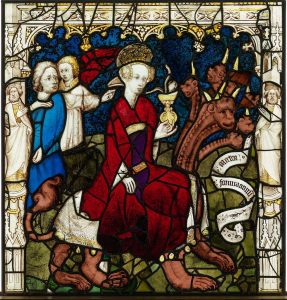
+24th Sunday after Pentecost+
It never fails to amaze me how many different ways the enemy can attempt to confuse and defuse those who are trying to defend the faith and obey the laws of God. And this time, while standing next to an oversized portrait of St. Thomas Aquinas, no less! This attack comes from a Novus Ordo apologist, Taylor Marshall, who, ever so slyly insinuates that those praying at home are adhering to an old heresy that has been defended and advanced by some Novus Ordo theorists, but mainly LibTrads and other schismatic sects, for decades. (His video can be viewed HERE.) Of course he makes his accusations based on the assumption that those praying at home actually have valid and licit sacraments available to them but choose instead to forego them in favor of approaching God directly, when no valid Sacraments save marriage and Baptism are available to us today. And needless to say, he is inviting us to receive the infernal parody of the Sacraments offered by the counter-church. When pigs fly.
The heresy Marshall refers to is that of “Bl.” Joachim of Fiore, a 13th century Capuchin abbot, but he fails to inform his viewers that Joachim’s status as a beatus is one arbitrarily assigned to him by his admirers, not by a true pope, (see here). He even gives his feast day as May 29, which can be found in none of the beati listed with the saints in Butler’s Lives of the Saints or elsewhere. Marshall never really classifies the abbot’s teachings as heretical, when in reality Pope Alexander IV, in 1256, condemned Joachim for his teachings and those of his followers, (but this was after his death). The Lateran Council and Pope John XXII also condemned his followers for teaching the same errors. But even before this, his teachings had been condemned by St. Thomas Aquinas and other theological schools, although St. Thomas Aquinas was aware that “…however dangerous the abbot’s doctrines were, the Joachites [his followers] had gone far beyond them” (Bernard McGinn; see Conclusion below for citation). So what was it that Joachim of Fiore taught? We read from the Catholic Encyclopedia, followed by my comments:
“There are three states of the world, corresponding to the three Persons of the Blessed Trinity. In the first age the Father ruled, representing power and inspiring fear, to which the Old Testament dispensation corresponds; then the wisdom hidden through the ages was revealed in the Son, and we have the Catholic Church of the New Testament; a third period will come, the Kingdom of the Holy Spirit, a new dispensation of universal love, which will proceed from the Gospel of Christ, but transcend the letter of it, and in which there will be no need for disciplinary institutions. Joachim held that the second period was drawing to a close, and that the third epoch (already in part anticipated by St. Benedict) would actually begin after some great cataclysm which he tentatively calculated would befall in 1260. After this Latins and Greeks would be united in the new spiritual kingdom, freed alike from the fetters of the letter; the Jews would be converted, and the “Eternal Gospel” abide until the end of the world.”
Comment: No need for disciplinary institutions? Wasn’t this precisely the goal of the Modernists, and wasn’t that goal largely realized in the1983 revision of Canon Law and the rule of LibTrad pseudo-clergy, minus any need for a true pope? Isn’t it indeed the Novus Ordo that has introduced the “Novus Ordo Missae” and the new age of the “Holy Spirit” by sanctioning charismatic “Catholicism”?
“The sect of the “Joachists” or “Joachimists” arose among the “spiritual” party among the Franciscans, many of whom saw Antichrist already in the world in the person of Frederick II, nor was their faith shaken by his death in 1250. One of their number, Fra Gherardo of Borgo San Donnino, wrote a treatise entitled “Introductorium in Evangelium Aeternum”, of which the contents are now known only from the extracts made by the commission of three cardinals who examined it in 1255. From these it is clear that the Joachists went far beyond what the abbot himself had taught. They held that, about the year 1200, the spirit of life had gone out of the two Testaments and that Joachim’s three books themselves constituted this “Eternal Gospel,” which was not simply to transcend but to supersede, the Gospel of Christ. The Catholic priesthood and the whole teaching of the New Testament was to be rendered void in a few years.”
Comment: Well it may have taken them a little over 700 years but isn’t that exactly what they have accomplished?!
“This work was solemnly condemned by Alexander IV, in 1256, [DZ 458, regarding Abbot Joachim’s follower and champion, William of St. Amour] and the condemnation involved the teaching of Joachim himself. His central doctrine was confuted by St. Thomas in the Summa Theologica (I-II, Q. 106, a. 4), and its Franciscan exponents were sternly repressed by St. Bonaventure. Another blow was given to the movement when the fatal year 1260 came, and nothing happened.” So what exactly does St. Thomas Aquinas have to say about St. Joachim’s teachings? From Summa Theologica, I-II, Q. 106, a. 4:
“On the contrary, Our Lord said (Mat. 24:34): “I say to you that this generation shall not pass till all (these) things be done”: which passage Chrysostom (Hom. lxxvii) explains as referring to “the generation of those that believe in Christ.” Therefore the state of those who believe in Christ will last until the consummation of the world…
“I answer that: Therefore no state of the present life can be more perfect than that of the New Law, since the nearer a thing is to the last end, the more perfect it is… We are not to look forward to a state wherein man is to possess the grace of the Holy Ghost more perfectly than he has possessed it hitherto, especially the apostles who “received the first fruits of the Spirit, i.e. sooner and more abundantly than others,” as a gloss expounds on Rom. 8:23… As Dionysius says (Eccl. Hier. v), there is a threefold state of mankind; the first was under the Old Law; the second is that of the New Law; THE THIRD WILL TAKE PLACE NOT IN THIS LIFE, BUT IN HEAVEN.
“Reply to Objection 3: “The Old Law corresponded not only to the Father, but also to the Son: because Christ was foreshadowed in the Old Law. Hence Our Lord said (Jn. 5:46): “If you did believe Moses, you would perhaps believe me also; for he wrote of Me.” In like manner the New Law corresponds not only to Christ, but also to the Holy Ghost; according to Rom. 8:2: “The Law of the Spirit of life in Christ Jesus,” etc. Hence we are not to look forward to another law corresponding to the Holy Ghost.”
“Reply to Objection 4: Since Christ said at the very outset of the preaching of the Gospel: “The kingdom of heaven is at hand” (Mat. 4:17), it is most absurd to say that the Gospel of Christ is not the Gospel of the kingdom. But the preaching of the Gospel of Christ may be understood in two ways. First, as denoting the spreading abroad of the knowledge of Christ: and thus the Gospel was preached throughout the world even at the time of the apostles, as Chrysostom states (Hom. lxxv in Matth.). And in this sense the words that follow—“and then shall the consummation come,” refer to the destruction of Jerusalem, of which He was speaking literally. Secondly, the preaching of the Gospel may be understood as extending throughout the world and producing its full effect, so that, to wit, the Church would be founded in every nation. And in these sense, as Augustine writes to Hesychius (Epist. cxcix), the Gospel is not preached to the whole world yet, but, when it is, the consummation of the world will come.”
According to Rev. R. Gerald Culleton’s The Prophets and Our Times (1941), Abbot Joachim also taught: “After many prolonged sufferings endured by Christians… a remarkable Pope will be seated on the Pontifical throne under the special protection of the angels. Holy and full of gentleness, he shall undo all wrong, recover states of the Church, reunite the exiled temporal powers and shall… recover the Kingdom of Jerusalem. All men will return to the primitive Church and there shall be only one pastor, one law, one master — humble, modest and fearing God (the Pope). The true God of the Jews our Lord Jesus Christ will make everything prosper beyond all human hope because God alone can and will pour down on the wounds of humanity this oily balm of sweetness….
“This angelic Pope will preach the gospel in every country. Through his zeal and solicitude, the Greek church will be forever reunited to the Catholic Church. The dispersed nation of Jews shall also enjoy tranquility… At the beginning, in order to obtain these happy results, having need of a powerful temporal assistance, this holy pontiff will ask the cooperation of the generous monarch of France, the great monarch. At that time a handsome monarch, a scion of King Pepin will come as a pilgrim to witness the splendor of this glorious pontiff whose name shall begin with R… The temporal throne becoming vacant, the Pope shall place on it this king whose assistance he shall ask.”
And all the above might have been a possibility if the papacy had not been usurped unopposed by a canonically elected pope for 65 years, until a certainly valid election became impossible. (According to the Catholic Encyclopedia under Antichrist, Abbot Joachim foresaw this usurpation but not its consequences.) Below we will read at greater length from the essay Joachim of Fiore and Apocalyptic Immanence, by Paul Ziolo, Department of Psychology, University of Liverpool, 2017) regarding the far-reaching implications of Abbot Joachim’s teachings.
“1) Human history is divided into three successive Ages (in Joachimite terms, the Ages or Status (Lat. status (pl.) in the sense of epochs, aeons or psychospiritual ‘conditions’) of the Father, of the Son and of the Holy Spirit). Humanity is currently situated in the Second Age – the age of struggle and transition, while the Third will be the ‘New Age’, bringing the resolution of all conflict and an endlessly static ‘spiritualised’ state of human perfection. Sometimes (as in the Marxist interpretation), time and distance bring about a re-evaluation, so that the age of struggle and transition is transposed to the Third – (modes of production based on hunter-gatherer economies, feudal slavery, then Capitalism as an age of struggle and illumination) – which will finally culminate in a Fourth Age of stasis and perfection (the Marxist ‘withering away of the State’).
2) The New Age will heralded by the victorious struggle of the God-anointed ‘World Emperor’ in alliance with the ‘Angelic Pope’ over the ‘Beast of the Apocalypse’ (the evil, secular power) and the Antichrist ( the Antipope or the incarnation of the secularised Papacy).
3) The New Age will be ushered in or ‘catalysed’ by two new monastic orders – one engaged in the active life, the other – the ‘spiritual order’ – in the contemplative. In later interpretations (e.g. by the Jesuits and modern totalitarian philosophies) these two orders became fused into one.”
Ziolo then provides four illustrations representing the Trinity and the three different phases. The final phase actually points to the establishment of the Novus Ordo church, a fact that conveniently escapes Taylor Marshall. Ziolo continues, and the comment on the title of Fig. 4 is entirely his own:
“Fig.4 is entitled DISPOSITIO NOVI ORDINIS – the Configuration of the New Order (note the somewhat sinister implications of this title). This image depicts the social structures of the Third Status, laid out in the form of the human body (representing the ‘Body of Christ’) and, at the same time, the Cross of Jerusalem (the new Civitas Dei or City of God)… The lowest (and largest [social structure]) is that of the Sheep (Ovis) – i.e. the People. Democracy still has a long way to go.
“For romantics and reactionaries of the 19th and early 20th centuries, the medieval ‘Abbot of Calabria’ [Joachim] had become a remote, mysterious, almost legendary figure whose cryptic prophecies, vast systematisation of history and brilliantly illuminated figurae began to exercise that fascination created by distance in time. The passing centuries had seen an increasing extension, generalisation and abstraction of the Joachimite program within the broader context of the traumatic collapse of the Christian group-fantasy… Throughout the 19th and 20th centuries therefore, the Joachimite visions are found embedded in the writings of a dense network of European literati, feminists, visionaries, reformers and revolutionaries… These fantasies were always latent in European history, given form through the immanence of dynamic trinitarianism and canonical endorsement by the Joachimite prophecies…
“The main vehicle for the diffusion of Joachim’s ideas remained the Eternal Evangel, compiled by Santo Donnino in 1252. Although this work occasionally inspired searches for and scholarly work on, the primary sources, as well as encounters with the hypnotic figurae, it became the main emotional ‘mirror’ through which visionaries sought to re-interpret the present in terms of the past. This European network included such personalities as George Eliot, Pierre Leroux, George Sand, Ernest Renan, Matthew Arnold, John Addington Symonds, Percy Bysshe Shelley, William Pater, Joris-Karl Huysmans, W.B. Yeats, D.H Lawrence, the painter Wassily Kandinsky, the metahistorian Arnold Toynbee and the psychoanalyst, C.G. Jung…” (Marshall explains in his video that a modern psychoanalyst, Jordan Peterson, has stated he is a member of the church of “St.” Joachim of Fiore, so beware — especially given what follows below.)
“Three of these figures deserve special mention in view of their relevance for psychohistory,” [but here we will mention only one of these]. “Joris-Karl Huysmans’ 1891 novel Là-Bas (‘Down There’) is a psychohistorically interesting work — parts of which have actually been transcribed onto psychohistory websites. The novel is a study of Satanism, child abuse and human sacrifice in the form of what is in fact an autobiographical novel (part of a series). Two narratives, displaced in time, are intertwined in the text – the protagonist Durtal’s involvement with Parisian Satanic cults of the late 19th century (the era of the notorious so-called Mass Priests) and a biography of the early 15th century child rapist, mass murderer and Satanist Gilles de Rais. Through this double narrative Huysmans develops his main thesis – that archaic, infanticidally-based psychoclass structures, ever latent but hidden and held in check during periods of comparative social stability (such as the earlier Middle Ages), may re-emerge during times of pronounced social anomie and disintegration. The novel is threaded with Joachimite ideas.
“[But] The darkest fruits of the Joachimite tree were the archaist and futurist totalitarian systems of the 20th century – in which Joachim’s viri spirituales became transformed into the brutal SS and communist party ‘cadres’. How did this happen? As I have stated, the wandering Fraticelli had played a major role in the dissemination of pseudo-Joachimite ideas… from the 13th-14th centuries, thus preparing the ground for the heretic and reformist movements that were to culminate in the Reformation itself. Lutheran reformers in turn transmitted the revolutionary ideas of Joachimism via Bohemia and Poland to Russia… In Russia, the ancient conception of Moscow as the ‘Third Rome’, dating from the fall of Constantinople in 1453, was a natural product of purely Trinitarian (rather than apocalyptic) thinking. After the increasing ‘self-divinisation’ of the Russian Monarchy, beginning with the assumption in 1547 of the title of Tsar by Ivan IV (‘The Terrible’), and especially after the Nikonian Reforms of 1652, apocalyptic movements began to proliferate and acquire a distinctly Joachimite tinge.
“By the late 19th century, philosophers, writers and visionary historians such as Soloviev, Merezhovsky, Dostoievsky and Danilovsky displayed a thorough acquaintance with the Joachimite program and had incorporated it into their own visions of Russia’s ‘destiny’. The ground was therefore well prepared for the Marxist conception of history as comprising three economic phases: primitive communism, class- structured society and the ‘new communism’ (with the Third International inaugurating the transition to the communist version of the Third Status) as well as the later Leninist-Stalinist formulations of the Party as the ‘vanguard of the Revolution’. The ideological ‘cadres’ were to become Joachim’s ‘contemplative’ order while the GPU-NKVD-KGB were to assume the role of the ‘active’ order.
“In Germany, where the seeds of the Joachimite tree had been planted by reformers and long watered by generations of conservative Lutherans, the Third Status was clearly envisaged in terms of the Third Reich (it should be remembered that it had been the Emperors of the ‘First’ Reich that had served as the original prototypes for Joachim’s ‘Worldly Emperor’). Under Nazism, the two orders at first coalesced into the SA, then later into the SS (neither the SD nor the Gestapo served any specifically ideological function). The most poisonous fruit of the tree came to flower after the division of the SS into the Waffen-SS and the Totenkopfverbände (‘Death’s Head’ Guards) in 1936, with the latter specifically entrusted with the engineering of the Holocaust.
The Joachimite vision continues to influence modern conceptions of the future. One of its most specific ‘translations’ is found in [Isaac] Asimov’s Foundation Trilogy…. This vision continues to colour all political and economic visions and policies that conceive of human destiny as a march towards some form of paradise, as unilinear progress or as the realisation of some ‘Manifest Destiny’… Apocalyptic thought will always be part of any re-envisioning of world culture promulgated by the alliance between the Euroamerican scientific-technological establishment and global corporations. In seeking to establish a New World Order built on global capitalism, such entities still strive to realise Joachim’s Dispositio Novi Ordinis in terms of the present…” (End of Ziolo quotes).
The above is confirmed by no less than Novus Ordo “Cardinal” Henri de Lubac, S.J.:
“Joachimism exerted a significant influence upon the thinking of people, de Lubac maintained, as far apart in their views as the once-liberal then utopian-socialist Henri de Saint-Simon, the Nazi racial theorist Alfred Rosenberg, and, above all, Karl Marx and associated Marxist theorists such as the German philosopher Ernst Bloch. Underpinning all these ideas, de Lubac held, was a type of laicized millenarianism which conveyed the sense that a new age was about to dawn as history inevitably progressed toward some type of this-worldly utopia… In his Mémoires sur l’occasion de mes écrits, de Lubac wrote:
“Under the various forms it has assumed, I consider Joachimism to be a still-present and even pressing danger. I recognize it in the process of secularization, which, betraying the Gospel, transforms the search for that Kingdom of God into social utopias. I see it at work in what was so justly called the “self-destruction of the Church” [after Vatican II]. I believe that it can only aggravate the misery and cause the abasement of our humanity.” (See complete article here). It is no surprise that according to Wikipedia and other works by Novus Ordo authors, the condemned Modernist Ernesto Buonaiuti, declared a vitandus heretic by Pope Pius XI, was one of the first researchers in the modern-day application of Joachinism. Buonaiuti was the Modernist seminary professor Angelo Roncalli befriended, and this friendship was the reason Roncalli himself was labeled by Pope Pius XI as a suspected Modernist.
So finally we know the actual origins of this Great Monarch, Holy Pope business and where it is now headed — Heaven on earth with technocracy as its god. LibTrads embracing it today have no clue that this is actually a neo-Modernistheresy they are committing themselves to, although their pseudo-clergy at the top most likely do know. Even the secular world understands this as the following quote demonstrates: “Joachim has always had a double reputation, as saint and as heretic, for cautious Christian thinkers and leaders have seen his writings as HIGHLY DANGEROUS. The debate as to whether he was orthodox or heretic continues today” (Encyclopedia Britannica). But of course there can be no such debate on the part of Catholics in view of the papal condemnations listed above. And while LibTrads may object that it is a spiritual revival they are anticipating, not a secular one, they need to heed the teaching of the Angelic Doctor St. Thomas and other Church Fathers, as will be explained below.
Conclusion
“The nature of this third age explains why Joachim’s views can be characterized by the term “radical eschatology.” All medieval thinkers were eschatological in the sense that they accepted the Christian understanding of history that looked forward to the definitive event of the return of Christ and the end of time. Joachim’s sense of the imminence of his third age does not of itself make his thought distinctive; from Gregory the Great to Norbert of Xanten, popes and saints had been convinced that all things were fulfilled and they themselves would live to see the end. But Joachim saw the terrors of the time of the Antichrist as presaging an age of completion within history and not outside it; after the persecutions of the man of iniquity, God would initiate the age of the Holy Spirit, the perfection of the divine action within history. Only after the third age would come the final tribulation and the sabbath rest of eternity.” (The Abbot and the Doctors: Scholastic Reactions to the Radical Eschatology of Joachim of Fiore, Bernard McGinn, 1971).
McGinn explains in his work that theologians post-Vatican 2 were divided on the intent of Abbot Joachim, some believing that this age meant nothing more than a restoration of the Church, retaining all its institutions and Sacraments, and yet others — de Lubac among them — who saw the abbot’s intent as a church excluding the papacy, the sacraments and the hierarchical order. Whether this was actively intended by Abbot Joachim or whether his followers were the culprits in advancing this notion is anyone’s guess. But the final results leave no room for doubt. They all too clearly point out the failure of the Novus Ordo and LibTrad sects to reject the notion of a spiritualized version of Abbot Joachim’s “New Age” (such a telling term!) and adhere to the teachings of St. Thomas Aquinas, St. Bonaventure and St. Augustine — relying on private prophecy whose works were condemned as heretical versus Church teaching.
If we carefully consider what St. Thomas teaches in the quotes above, several things will become clear.
— “I say to you that this generation shall not pass till all (these) things be done”: which passage Chrysostom (Hom. lxxvii) explains as referring to the generation of those that believe in Christ.” Therefore the state of those who believe in Christ will last until the consummation of the world…” Notice that here St. Thomas says nothing about the ”fact” held by LibTrads that the hierarchy, meaning the cardinals, bishops and priests headed by a canonically elected pope, must be among those who still believe in Christ. As pointed out in other blogs, 70 years is counted as a generation in the Old Testament. And in 2028, it will be 70 years since the death of Pope Pius XII.
— “There is a threefold state of mankind; the first was under the Old Law; the second is that of the New Law;THE THIRD WILL TAKE PLACE NOT IN THIS LIFE, BUT IN HEAVEN… Hence we are not to look forward to another law corresponding to the Holy Ghost.” This excludes any possibility of an “age of peace,” or of “the Holy Spirit,” as Joachim imagined. Joachim believed in two Antichrists; one before the third age and another at the end of the Third age, Gog and Magog, before the Second Coming. Holy Scripture teaches that there will be only one, “the MAN of sin, the SON of Perdition” (2 Thess. 2). The very fact that the papal seat is now vacant and that according to the laws and teachings of the Church there is no way competent electors could elect a true pope should convince those anticipating the age of peace. Truly the Great King and Angelic Pastor “revelation” was only a figment of Joachim’s overactive imagination.
— It is St. Augustine who insists in his City of God “That the thousand-year period of a “first resurrection” (Apoc. 20.4-6) cannot be taken to apply to an earthly future, as is well known. For Augustine (City of God 20.7-10), and for all medieval commentators following him until Joachim, the thousand-year kingdom of Revelation was meant to be understood figuratively as the spiritual resurrection of the elect reigning in the Church in the present.” (Antichrists and Antichrist in Joachim of Fiore, Robert E. Lerner Speculum, Vol. 60, No. 3 (Jul., 1985).
— “The preaching of the Gospel may be understood as extending throughout the world and producing its full effect, so that, to wit, the Church would be founded in every nation… And in this sense, as Augustine writes to Hesychius (Epist. cxcix), the Gospel is not preached to the whole world yet, but, when it is, the consummation of the world will come.” Was not the Church “founded in every nation” before Her demise, then, if only imperfectly? So should we not then expect the consummation?
— As St. Thomas teaches in the Supplement to the Summa (73:1), “Although men be terrified by the signs appearing about the judgment day, yet before these signs begin to appear the wicked will think themselves to be in peace and security after the death of Antichrist and before the coming of Christ, seeing that the world is not at once destroyed as they thought hitherto.” And these seem to be the times in which we live. As stated in an earlier blog, it is most likely that the first to be judged at the Final Judgement will be Roncalli and Montini, whose resurrected bodes will then be cast into the lake of fire.
The final nail in Abbot Joachim’s coffin is Pope Pius XII’s decision on even mitigated millenarianism. In this decree binding on the faithful the (AAS 36, 1944, 212) Pope Pius taught:
“In recent times on several occasions the Supreme Congregation of the Holy Office has been asked what must be thought of the system of mitigated millenarianism which teaches, for example, that Christ the Lord before the final judgment, whether or not preceded by the resurrection of the many just, will come visibly to rule over this world. The answer is the system of mitigated millenarianism cannot be taught safely” (Denzinger’s Sources of Catholic Dogma, DZ 2296). Notice that Pope Pius XII uses the word “for example.” This can only mean that there are several other aspects of this teaching. And the teaching referenced can only be that of Manuel Lacunza, who is identified in the official notice of the Holy Office condemnation as the author of this system (see here). So what was it that Lacunza taught?
“Upon his [Antichrist’s] death, the Church, and the whole world, shall begin to breathe again, everything reverting to a perfect calm, and a universal joy. The Bishops, who had concealed themselves in mountains, shall return and resume their sees, accompanied by their clergy and some other Christian families, who had followed them in their voluntary exile. At this time shall come to pass, the conversion of the Jews, according to the universal spirit of the converters” The source for this information adds: “’End of the age’ and ‘end of the world’ refer to two different times. He understood the ‘end of the age’ or “day of the Lord” as merely the end of a phase of human history… If the 20th chapter of the Apocalypse is to be literally understood, Jesus Christ himself with all his saints now risen, ought actually to reign in Jerusalem over the whole orb of the earth, and that for a thousand years… The dragon will once again be loosed and will return to deceive the whole world… “ (see here). And then shall come the Final Judgement.
So much for the LibTrad’s “return of the bishops,” which is among the many things Lacunza erroneously taught in his writings. Didn’t even de Lubac warn that Joachim would eliminate the need for the hierarchy? Why doesn’t Lacunza mention the pope? Because clearly he is a follower of Abbot Joachim, as the entirety of his works easily show. And as we know, Abbot Joachim’s writings were already condemned by the popes before Lacunza wrote. But most importantly, while in past blogs we have spoken of the end of the Church’s age on earth, or consummation of the age at the death of Pope Pius XII, this is not to be taken to mean there could be another or third age. All it means is that Christ is allowing a lengthy interval to elapse between Antichrist’s actual death and the destruction of his system, followed by the Final Judgment. This is in accord with St. Thomas’ own teaching on this subject, as noted above.
So on this the 24th Sunday after Pentecost, when the Gospel of St. Matthew announces the arrival of the abomination of desolation, let us not forget that he has already arrived (although his system is still with us). Surely we must exist in that indeterminate time period following the consummation of the age of the Church described by St. Thomas, awaiting the Second Coming. Next week we will see how even a great saint ran afoul of St. Thomas Aquinas’ teaching and erroneously taught that Antichrist already had been born by relying too heavily on private revelations.
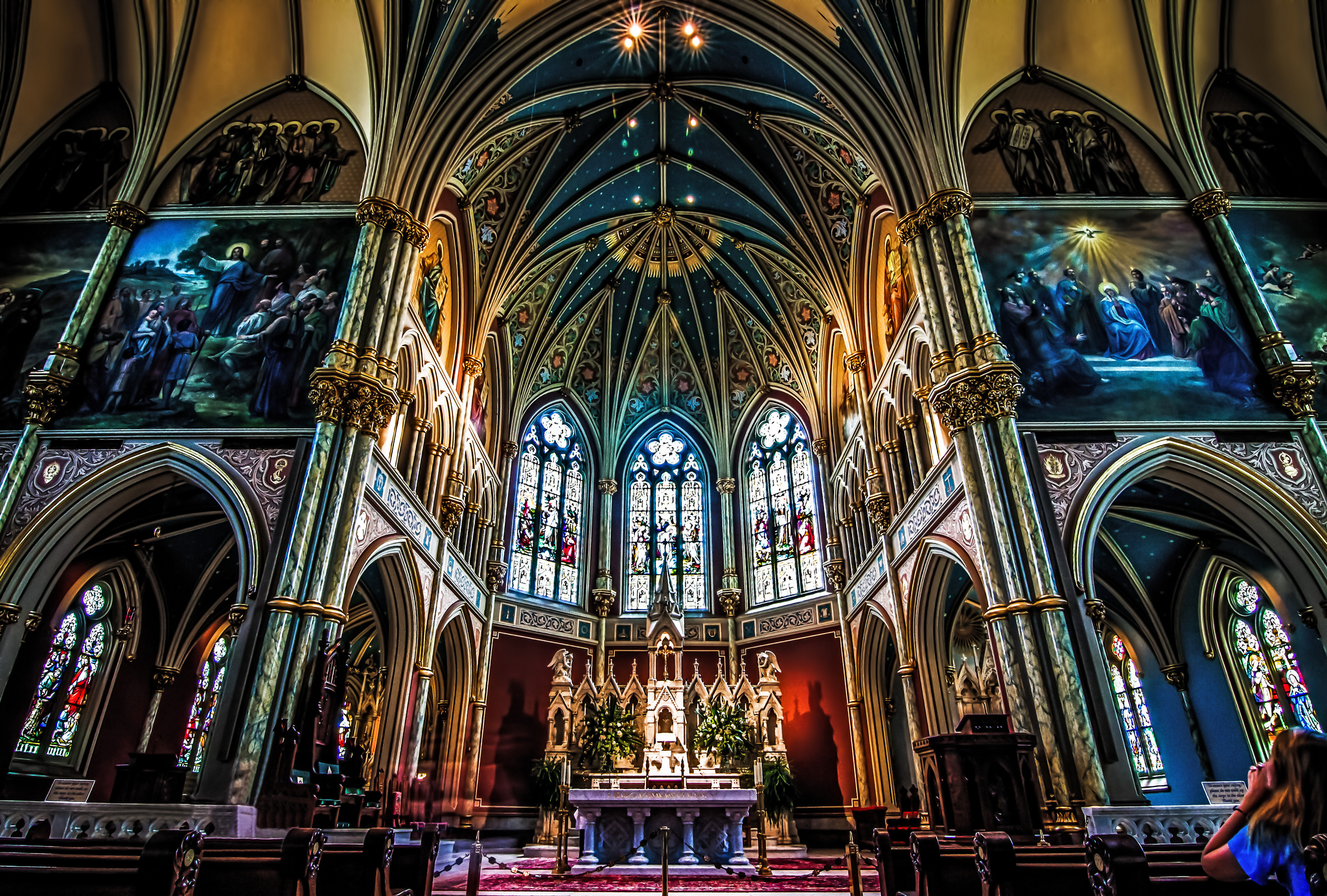
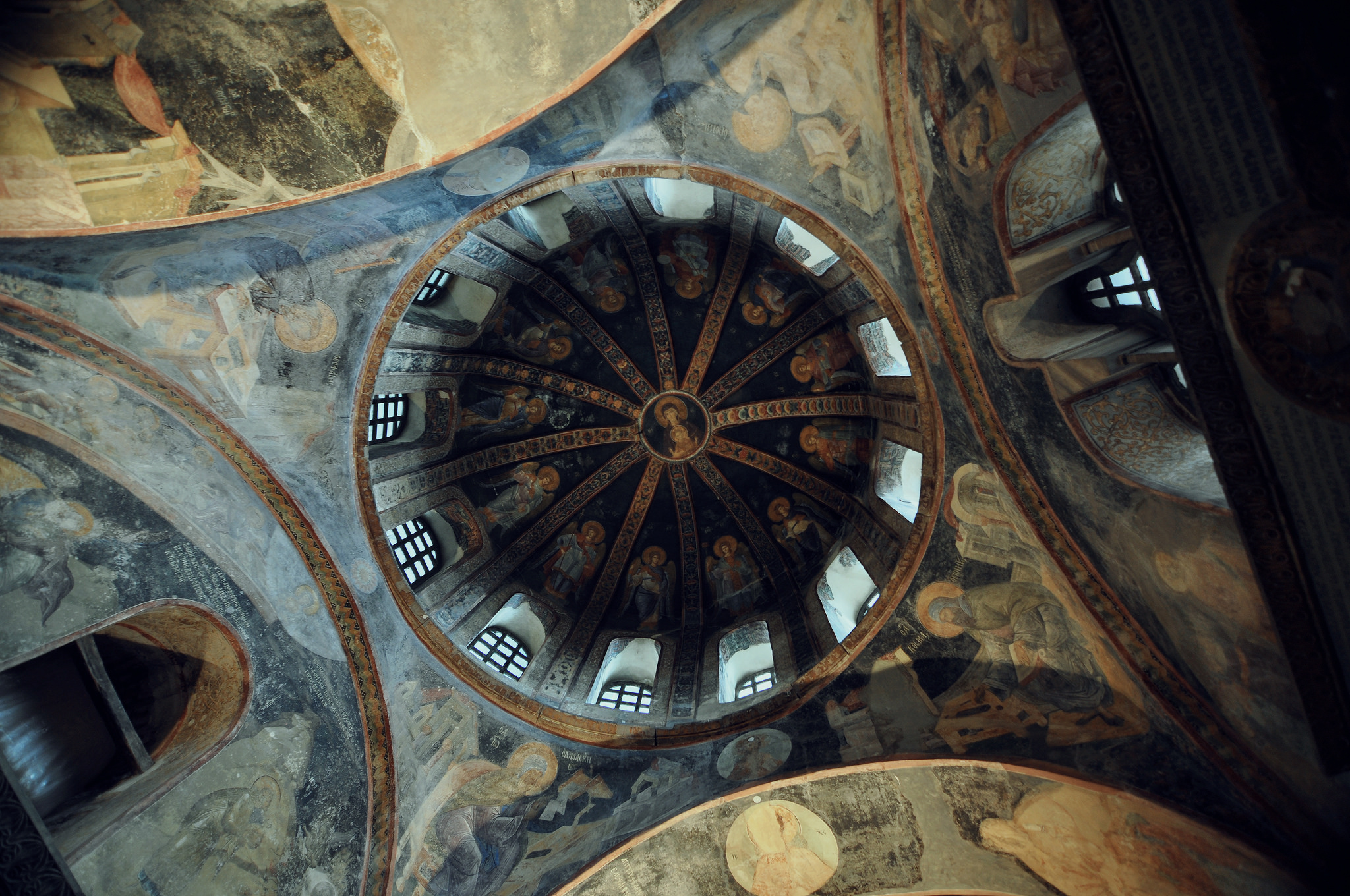
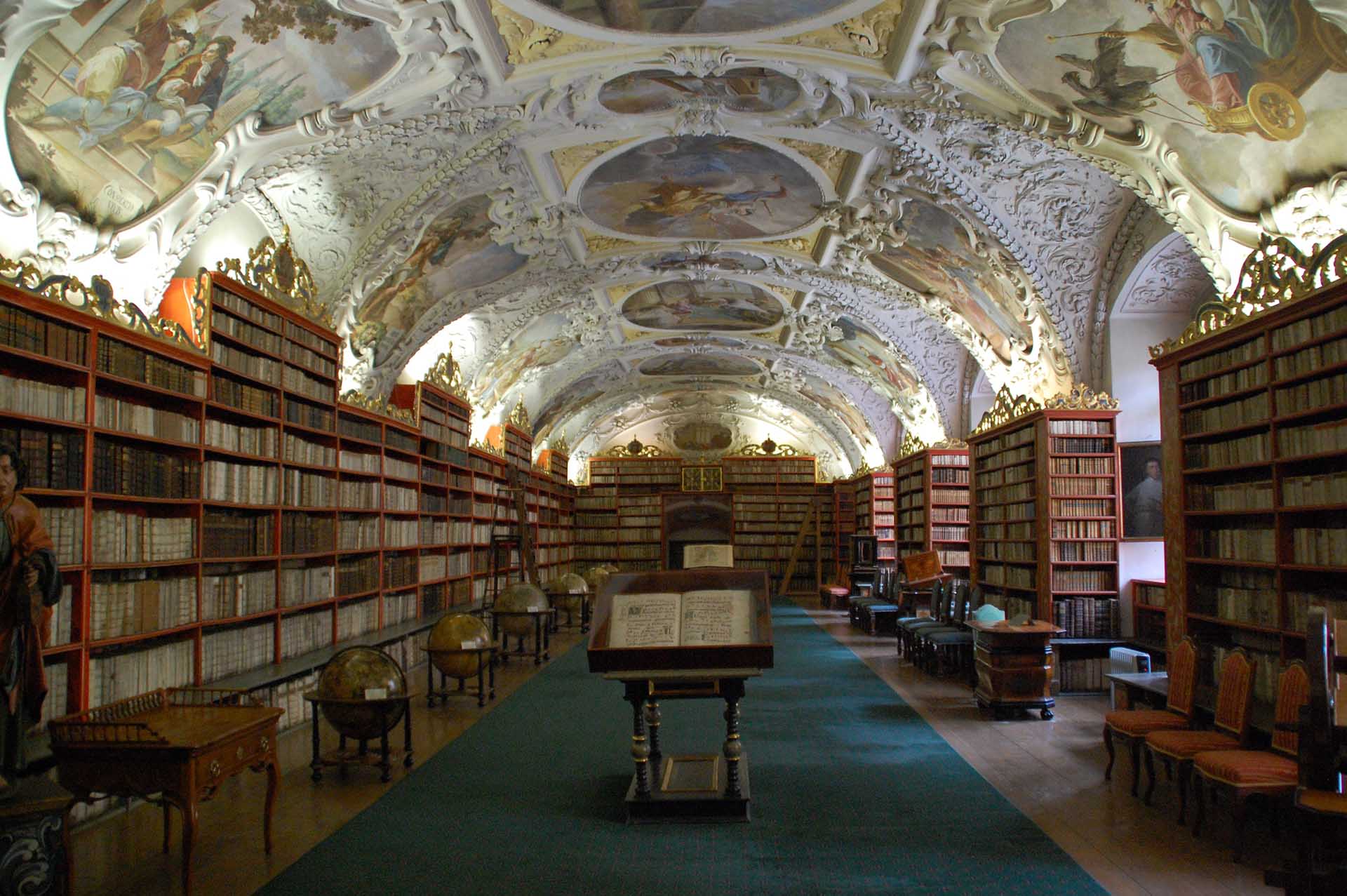
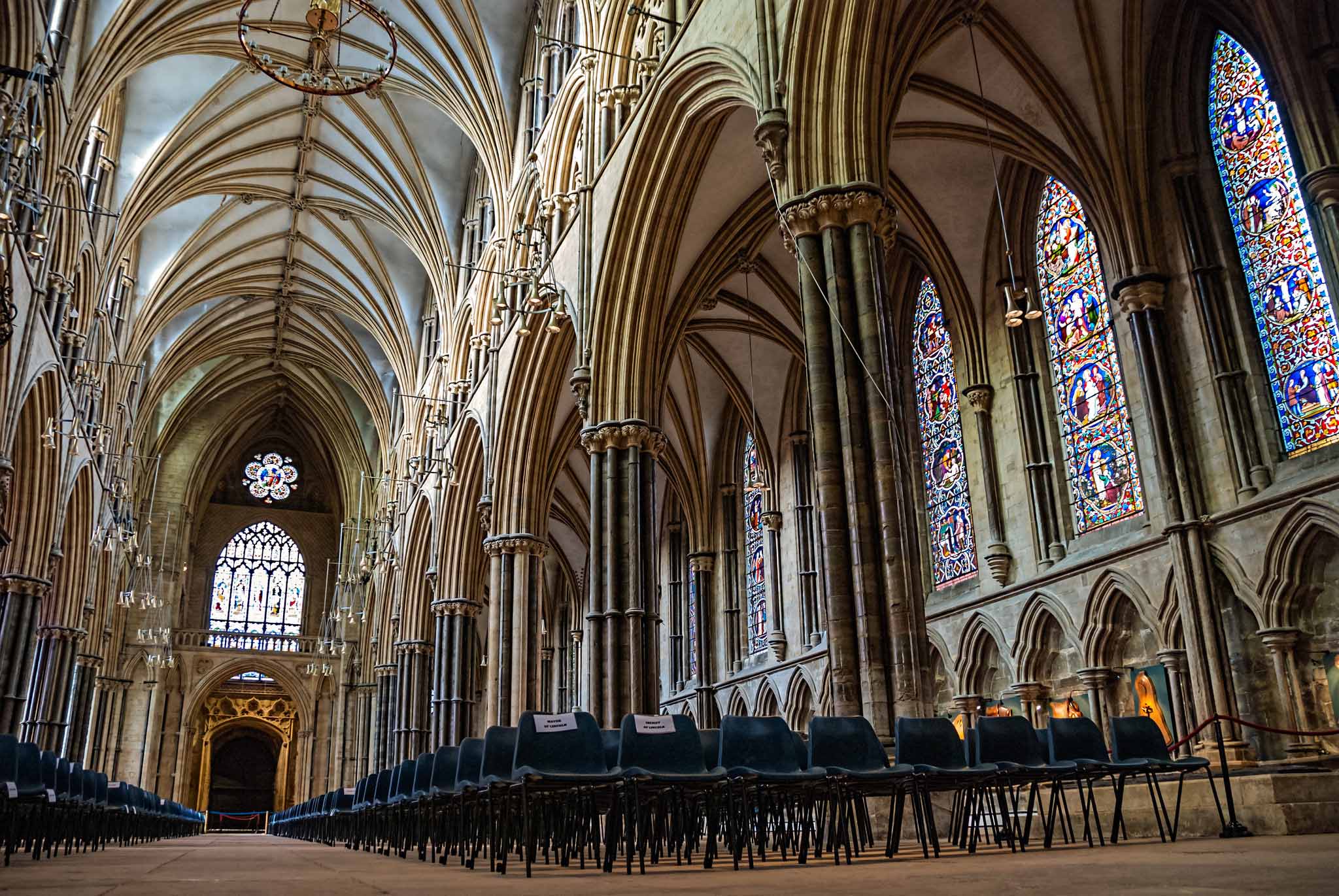
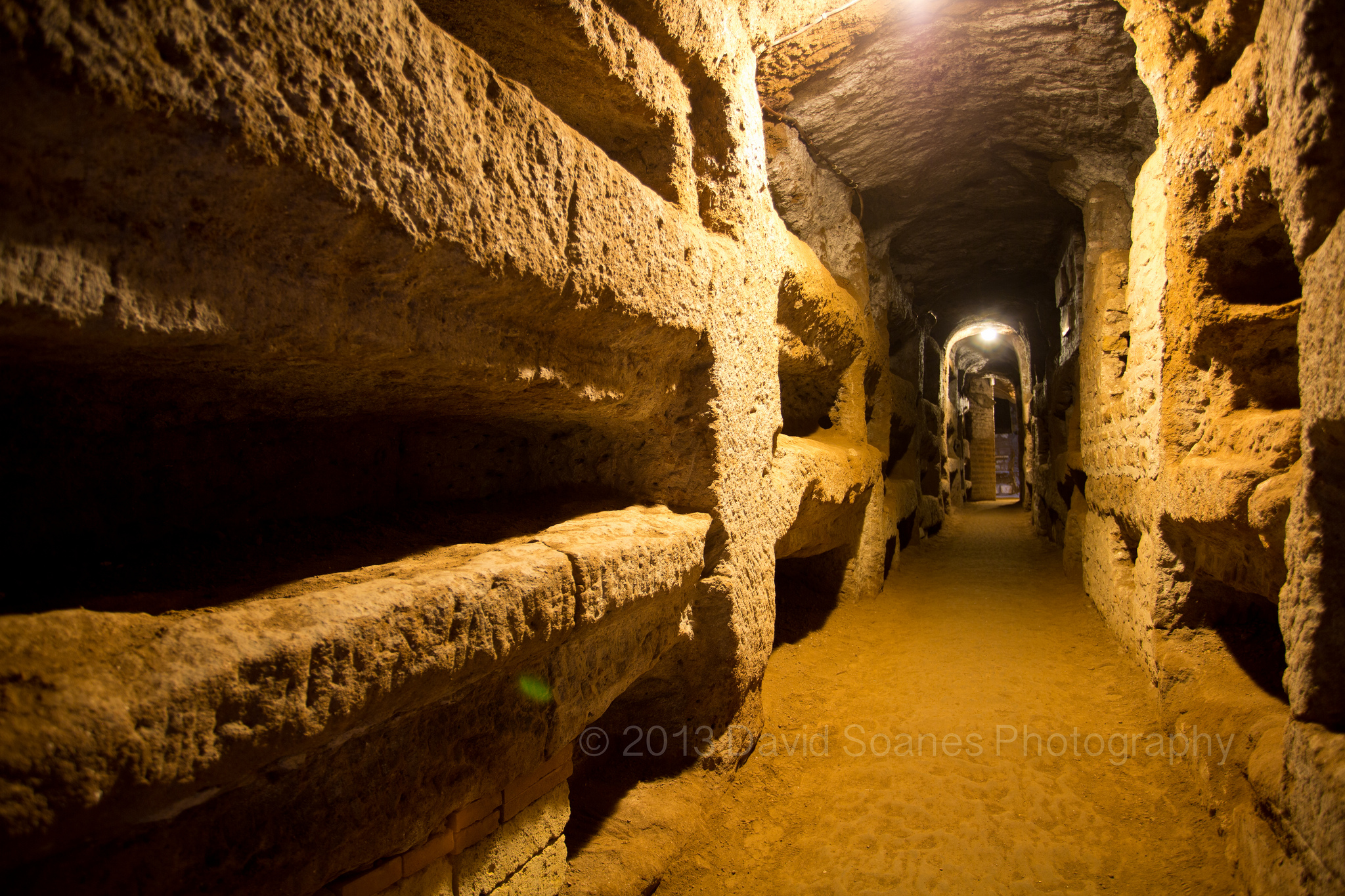

Dear Teresa,
Thanks for this information on Joachim of Fiore and Taylor Marshall.
I am happy to have more evidence of his faulty facts which he lays out as truth in a way that can really captivate innocent viewers. A friend of mine is just starting to see how false he is, thank God. This info you provide here will help her see even more clearly.
God bless you!
Irene
Thanks Irene — glad it helped. God bless.